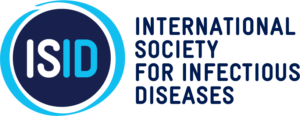GUIDE TO INFECTION CONTROL IN THE HEALTHCARE SETTING
EMERGENCY DEPARTMENT AND RECEIVING AREAS
Authors: Pawan Suri, MD; Ravinera Gopaul, MD, MD
Chapter Editor: Gonzalo Bearman, MD, MPH
Topic Outline
Chapter last updated: February 2018
Print PDF
Print PDF
KEY ISSUES
- Healthcare workers in the emergency department and receiving areas need to be aware of the risks posed by blood and airborne infections, and take measures to limit exposure through early identification and isolation of high risk patients.
- It is mandatory to identify and isolate patients with highly contagious infections (e.g., tuberculosis) or when exposure to a bioterror agent is known or suspected.
KNOWN FACTS
- Universal precautions are promoted by the US Centers for Disease Control and Prevention because when patients initially present seeking medical care, it is often not known if their blood may contain hepatitis B or C viruses, human immunodeficiency virus (HIV), or other pathogens. All blood should be considered potentially contaminated, and efforts should be made to avoid direct contact, mucous membrane exposure, and sharp injuries.
- In addition, respiratory protection is prudent when caring for patients with suspected or confirmed tuberculosis or other highly contagious airborne infections (e.g., SARS)
CONTROVERSIAL ISSUES
- With respect to isolation, there are limited data comparing the cost and efficacy of different methods (provider face masks, negative pressure rooms, etc.). The type of isolation used is based on the mode of disease transmission. Overall, the costs associated with initiating basic isolation precautions are usually low and the benefits far outweigh the expense.
- The benefit of ventilation measures in the hospital on tuberculin conversion in healthcare providers is still under investigation. Higher tuberculin conversion rates have been reported among personnel who work in non-isolation patient rooms or rooms with fewer than 2 air exchanges per hour. Guidelines for the prevention of nosocomial transmission of tuberculosis recommend minimum air change rates of 2 to 15 per hour.
- There are scarce data on the ability of healthcare workers to identify patients at risk for transmitting infections. Patients with active pulmonary tuberculosis are often missed at emergency triage. In retrospect, some of these patients may have presented with typical symptoms and risk factors that are easily overlooked in a busy triage environment. Each emergency department should evaluate its process to see if opportunities for earlier diagnosis of tuberculosis exist.
SUGGESTED PRACTICE
- Provide patient educational materials about hand and respiratory hygiene/cough etiquette in emergency receiving and waiting areas.
- Mandatory careful hand hygiene, preferably with alcohol based hand sanitizer, before and after each patient encounter.
- Gloves and isolation gowns should be worn when contact with blood and body fluids is likely.
- Goggles or face masks should be worn when splashing of blood or body fluids is anticipated.
- Appropriately sized face masks should be worn in cases of suspected airborne infection (e.g., tuberculosis, SARS)
- Triage personnel should be trained to identify high-risk patients with potential communicable infections.
- Patients who appear unusually ill, especially with cough, should be isolated (>3 feet (1 m) distance) or provided a mask to limit risk to healthcare personnel and other patients.
- Patients who may have had a chemical exposure from a bioterror attack should be isolated and decontaminated as soon as possible.
- Efforts should be made to minimize staff flow between isolated and non-isolated patients.
SUGGESTED PRACTICE IN ALL SETTINGS
- A preventive strategy to infection control should be the priority and is the most cost-effective approach.
- Adherence to national guidelines with respect to occupational health and immunization of healthcare workers.
- Offer provider education and training in standard infection control measures (hand hygiene, PPE (personal protective equipment), aseptic technique, disposal of sharps).
- Mandatory careful hand hygiene before and after each patient encounter is a priority. Alcohol-based sanitizers are preferred and a cost-effective alternative in areas without running water or a functioning sewage system.
- Healthcare workers should wear PPE (gloves, isolation gowns) when contact with blood or body fluids is suspected. Goggles or face masks should be worn when splashing of blood or body fluids is anticipated.
- Triage personnel should be trained to identify high-risk patients with potential communicable infections and efforts should be made to isolate such individuals.
- Efforts should be made to minimize staff flow between isolated and non-isolated patients.
- Adequate decontamination of equipment between patients.
- Surveillance mechanisms should be implemented for evaluation of infection control measures
SUMMARY
- The adoption of reasonable healthcare safety precautions, as listed above, can minimize transmission of most contact-related infections in the emergency department. All personnel handling blood, body fluids, or sharps should be vaccinated against hepatitis B. Providing and using sharp containers reduces the risk of bloodborne infections.
- Risk of airborne infections can be minimized through use of rooms with exhaust fans or adequate ventilation.
- Occupational exposure to blood or droplets should be reported. Post-exposure counselling and therapy, if necessary, should be offered to all clinical personnel.
REFERENCES
- Updated U.S. Public Health Service Guidelines for the Management of Occupational Exposures to HBV, HCV, and HIV and Recommendations for Postexposure Prophylaxis. MMWR2001; 50(RR-ll): 1–52; available at https://www.cdc.gov/mmwr/preview/mmwrhtml/rr5011a1.htm.
- Guidelines for Environmental Infection Control in Healthcare Facilities. MMWR2003; 52(RR-10): 1–42; available at https://www.cdc.gov/mmwr/preview/mmwrhtml/rr5210a1.htm.
- Menzies D, Fanning A, Yuan L, et al. Hospital Ventilation and Risk for Tuberculous Infection in Canadian Healthcare Workers. Canadian Collaborative Group in Nosocomial Transmission of TB. Ann Intern Med2000; 133(10): 779–89.
- Damani N. Simple Measures Save Lives: an Approach to Infection Control in Countries with Limited Resources. J Hosp Infect.2007; 65:Suppl 2:151-4.
- Sokolove PE, Rossman L, Cohen SH. The Emergency Department Presentation of Patients with Active Pulmonary Tuberculosis. Acad Emerg Med2000; 7(9): 1056–60
- Siegel, JD, Rhinehart E, Jackson M, Chiarello L, and Healthcare Infection Control Practices Advisory Committee. 2007 Guideline for Isolation Precautions: Preventing Transmission of Infectious Agents in Healthcare Settings. Am J Infect Control. 2007; 35(10 Suppl 2):S65-164; available at http://www.ajicjournal.org/article/S0196-6553(07)00740-7/pdf.
